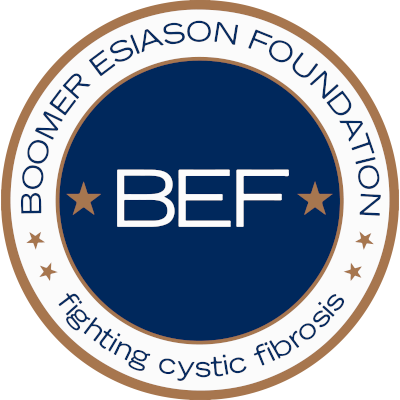The Value of Medicines and Who Decides It
Written by: Kashvi Kapoor
Medicines save lives. They improve health, extend lifespans, and allow people to live fuller, richer lives. But the true value of a medicine is often much more than the pill in a bottle or the price on a label. For patients, a life-changing drug might mean the ability to breathe freely, to hug loved ones, or simply to wake up to another day. For society, medicines can mean fewer hospital beds filled, fewer days lost at work, and a healthier, happier population.
Deciding how much a drug is worth is complicated. Who gets to make that decision? Governments? Pharmaceutical companies? Patients themselves? This paper explores the human and societal value of medicines, the challenges in determining their worth, and real world examples, focusing on the impact of cystic fibrosis treatments and a poignant case study from Australia.
Every medicine has a story—a journey of discovery, testing, and, ultimately, the hope it brings to patients. From a societal perspective, medicines are invaluable. They allow us to prevent diseases, reduce suffering, and cure once-incurable conditions. But when it comes to assigning a dollar amount, things get tricky.
Pharmaceutical companies invest billions in research and development to create new drugs. Governments and healthcare systems, on the other hand, work to ensure medicines are affordable and accessible. Tools like cost-effectiveness analysis help weigh a drug’s price against its benefits, such as how much it improves patients’ quality of life or reduces healthcare costs.
But these calculations often leave out the human element. Imagine telling a parent that a drug costing thousands of dollars per month is “too expensive,” even though it could save their child’s life. For that parent, no cost is too high. Striking the balance between affordability and innovation while keeping humanity at the center of the conversation is one of the greatest challenges in valuing medicines.
The Importance of Medicines for Cystic Fibrosis
Cystic fibrosis (CF) offers a powerful example of how medicines change lives. CF is a genetic disorder that clogs the lungs and digestive system with thick mucus, making every breath a struggle. For decades, treatments managed symptoms but didn’t address the root cause. Then came CFTR modulators—breakthrough drugs that target the disease at its source.
For people with CF, these medicines are nothing short of miraculous. They extend life expectancy, reduce hospital stays, and, most importantly, give people back their futures. A young adult with CF who once planned for a life measured in decades can now dream of college, a career, and a family.
But the cost of these medicines is staggering, sometimes exceeding $300,000 per patient annually. Governments and insurance companies must weigh the undeniable benefits against their budgets. For patients, the waiting and negotiating feel agonizing. For many, access to these drugs is a race against time.
A Case Study from Australia
Australia’s struggle with providing CFTR modulators, particularly Trikafta, reveals just how high the stakes can be. For two years, Australians with CF waited while the government and the drug manufacturer negotiated over the price of Trikafta. During this time, patients experienced worsening symptoms and watched their health deteriorate, knowing a potentially life-saving drug was just out of reach.
Eventually, a deal was struck, and Trikafta was added to the Pharmaceutical Benefits Scheme, making it affordable for thousands. While this was a victory, the delay had lasting impacts. Families felt abandoned, and many patients’ health deteriorated to a point where the drug could no longer fully reverse the damage.
This case highlights a critical truth: delays in access can be as harmful as outright denial. Medicines like Trikafta are more than numbers on a spreadsheet; they are lifelines for people fighting daily battles with their health.
The value of medicines goes far beyond their price tag. They hold the power to change lives, extend futures, and transform society. But deciding how much they are worth and who can access them is a delicate, deeply human challenge.
As we’ve seen with cystic fibrosis treatments and the Australian Trikafta case, delays in decision-making can have real, human consequences. Governments, pharmaceutical companies, and healthcare systems must work together to strike a balance—ensuring that innovation is rewarded but not at the expense of accessibility.
Ultimately, the value of a medicine should reflect not only its scientific and economic impact but also the hope it brings to the people who need it most. By putting patients at the heart of these decisions, we can ensure that the medicines of today—and tomorrow—reach those whose lives depend on them.
References
European Federation of Pharmaceutical Industries and Associations (EFPIA). (n.d.). Value of medicines. Retrieved from https://www.efpia.eu/about-medicines/use-of-medicines/value of-medicines/
Neumann, P. J., Cohen, J. T., & Weinstein, M. C. (2014). Updating cost-effectiveness — the curious resilience of the $50,000-per-QALY threshold. New England Journal of Medicine, 371(9), 796-797. https://doi.org/10.1056/NEJMp1405158
O’Neill, A., McNamara, M., & Wainwright, C. E. (2019). The cost of cystic fibrosis—an update and the need for innovative health economic solutions. Current Opinion in Pulmonary Medicine, 25(6), 611-617. https://doi.org/10.1097/MCP.0000000000000624
RealClearHealth. (2022). For two years, Australia failed people with cystic fibrosis. It can’t happen again. Retrieved from
https://www.realclearhealth.com/articles/2022/02/18/for_two_years_australia_failed_peop le_with_cystic_fibrosis_it_cant_happen_again_111317.html
The Value in Health Journal. (2020). Valuing medicines in the 21st century. Value in Health, 23(5), 615-623. https://doi.org/10.1016/j.jval.2020.02.001
Wouters, O. J., McKee, M., & Luyten, J. (2020). Estimated research and development investment needed to bring a new medicine to market, 2009-2018. JAMA, 323(9), 844-853. https://doi.org/10.1001/jama.2020.1166
